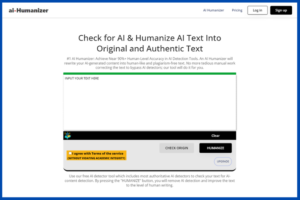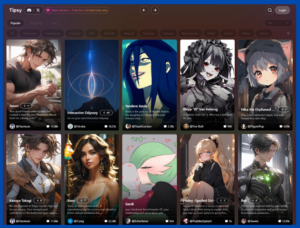Introduction
The world of large language models (LLMs) just witnessed a seismic shift. Google’s Bard, powered by the new Gemini model, has soared to new heights, achieving human-evaluation parity with OpenAI’s GPT-4, the reigning champion. This isn’t just a technical feat; it marks a turning point in the LLM landscape, promising exciting possibilities for the future of AI-powered interaction. Google’s deep learning and AI teams, led by Oriol Vinyals and Jeff Dean, have worked together to develop a new generation of language models that offer improved capabilities and performance.

Body of Gemini model
The days of Bard lagging behind GPT-4 are long gone. The official “scale” model of Gemini Pro has brought the difference closer. Bard ranked second on the rankings after people repeatedly assessed his responses as being on par with GPT-4 in Chatbot Arena’s blind tests. This demonstrates the enormous strides Google has made in improving its LLM technology.
The creation of the Bard Gemini model is more evidence of Google’s dedication to the advancement of artificial intelligence. Oriol Vinyals highlights the importance of human assessment when evaluating language models, pointing out that Bard Gemini has been able to move up the ranks according to user reviews. An important turning point has been reached with the release of the Gemini Pro-Scale model, which establishes Bard as a serious player in the AI space.
Key Features of Gemini model
Comparable Performance: Human assessments suggest that Bard Gemini performs similarly to GPT-4, demonstrating Google’s skill at creating cutting-edge language models.
Better Performance: Bard Gemini outperforms its predecessors in terms of capabilities and performance, providing users with a more sophisticated and captivating dialogue experience.
Competitive Benchmarking: The model’s outstanding results in the neutral benchmark of Chatbot Arena demonstrate its capacity to outperform previous GPT-4 models and contend with the best natural language processing systems.
Human-quality Text Generation: Bard can now produce text that is remarkably subtle and lifelike, emulating human writing styles and contextual adaptations. Bard’s versatility is evident in everything from writing polished emails to generating gripping novels.
Better Reasoning and Comprehension: Bard is able to delve deeper into complicated subjects, critically evaluate information, and make well-informed decisions thanks to the Gemini model’s enhanced reasoning capabilities.
Multimodal Capabilities: Bard is no longer confined to text. Richer and more interactive experiences are now possible because of its ability to process and respond to a variety of modalities, including graphics, code, and even audio.
Pros and Cons of Gemini model
Pros
- Improved Accessibility: Bard provides a strong substitute that may make cutting-edge LLM technology more widely available, given its performance being comparable to that of GPT-4.
- Emphasis on Responsible AI: In order to reduce potential biases and encourage responsible AI techniques, Google placed a strong emphasis on ethical issues during the creation of Bard.
- Collaboration Openness: Google actively engages with the scientific community to promote transparency and expedite the advancement of life sciences.
Cons
- Restricted Access: Bard is still in limited beta, which means that a larger audience cannot access it.
- Potential Bias: Regardless of how well they work, LLMs may still have biases that are present in their training set. It is imperative to maintain monitoring and employ mitigation methods.
- Changing Landscape: Research and development activities must continue in order to maintain parity in the LLM area, which is continuously changing.
How to Use Gemini model
Bard is available through particular research projects and partnerships even though it is still in development. Anticipate multiple channels of communication as it develops and goes live, such as specialized APIs, integrated apps, and maybe even an intuitive user interface.
Conclusion
The arrival of the Gemini-powered Bard marks a significant milestone in the race for advanced language models (LLMs). With its human-quality capabilities and responsible development approach, Bard holds immense potential to revolutionize how we interact with AI. Google’s unveiling of the Bard Gemini model signifies a pivotal moment in the evolution of natural language processing technology. As it becomes more accessible and continues to evolve, the possibilities for creative expression, knowledge exploration, and problem-solving seem limitless. Bard Gemini, with its improved capabilities and competitive performance, is proof of Google’s commitment to pushing the limits of AI innovation. AI has a far brighter future now that Bard is positioned to be a key player in forming it. While the world waits in anticipation for Gemini Ultra to launch, Google is busy reshaping conversational AI experiences.
Stay tuned for further updates on Bard’s journey and prepare to witness the transformative power of this next-generation LLM!
FAQs
1. What is Bard Gemini and how is it different from previous Bard models?
Bard Gemini is a new generation of Google’s Bard language model powered by the “scale” version of the Gemini model. It boasts significantly improved capabilities compared to earlier Bard versions, achieving human-evaluation parity with OpenAI’s GPT-4 in terms of text generation, reasoning, and comprehension.
2. What are the key features of Bard Gemini?
- Human-quality text generation: Bard Gemini can generate natural and nuanced text, adapting to different contexts and mimicking human writing styles.
- Enhanced reasoning and comprehension: It delves deeper into complex topics, analyzes information critically, and draws sound conclusions.
- Multimodal capabilities: Bard Gemini can now process and respond to various modalities like images, code, and audio, opening doors for richer interactions.
3. How does Bard Gemini compare to OpenAI’s GPT-4?
In blind evaluations, users rated Bard Gemini’s responses on par with GPT-4, placing Bard near the top of the leaderboard. This signifies its ability to compete with the current leader in the LLM field.
4. What are the pros and cons of Bard Gemini?
Pros:
- Increased accessibility with performance comparable to GPT-4.
- Focus on responsible AI development with emphasis on ethical considerations and bias mitigation.
- Openness to collaboration with the research community for transparency and advancement.
Cons:
- Currently in limited beta, restricting wider access.
- Potential for biases inherent in training data despite efforts to mitigate them.
- Continuous evolution of the LLM landscape necessitates ongoing development to maintain parity.
5. How can I use Bard Gemini currently?
Bard Gemini is still in beta and accessible through specific research programs and collaborations. As it matures and becomes publicly available, expect various avenues for interaction, including APIs, integrated applications, and potentially a user-friendly interface.
6. What are the future plans for Bard Gemini?
Google is actively developing the next iteration, Bard Advanced, which will provide access to the most advanced capabilities of the Gemini model, including Gemini Ultra. This promises even further advancements in performance and features.
7. What are the potential applications of Bard Gemini?
Bard Gemini’s capabilities hold immense potential across various fields, such as:
- Creative writing and storytelling
- Education and knowledge exploration
- Research and scientific discovery
- Business communication and marketing
- Personalized healthcare and customer service
8. Does Bard Gemini have any ethical concerns?
As with any AI technology, potential biases and misuse are concerns. Google emphasizes responsible development and is committed to ongoing efforts to mitigate these risks.
9. How will Bard Gemini impact the future of AI?
Bard Gemini’s human-evaluation parity marks a significant milestone in LLM development and paves the way for more advanced and nuanced AI interactions. It has the potential to revolutionize how we interact with technology and shape the future of AI.
10. Where can I find more information about Bard Gemini?
Stay tuned for further updates on Bard’s official blog and follow Google AI for the latest developments on the Gemini model and Bard’s advancements.




